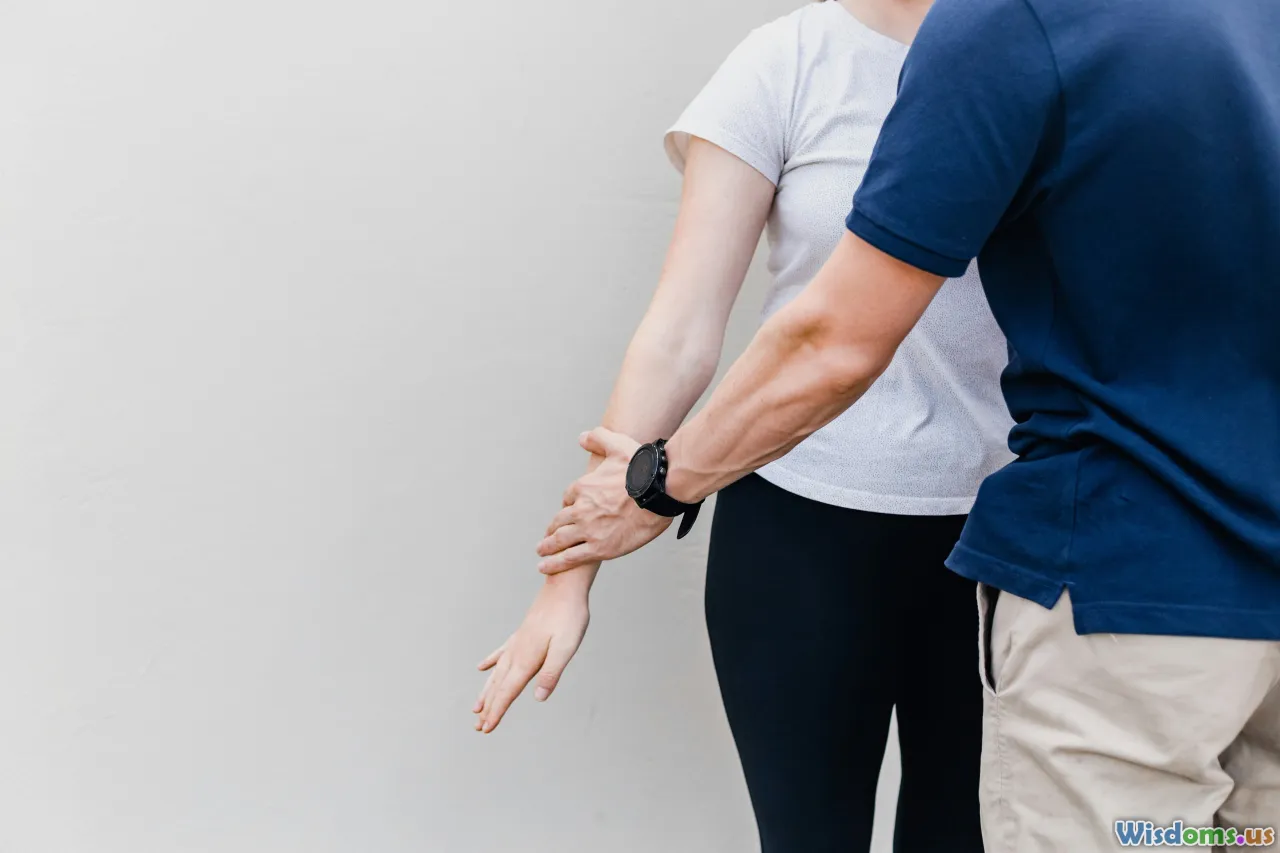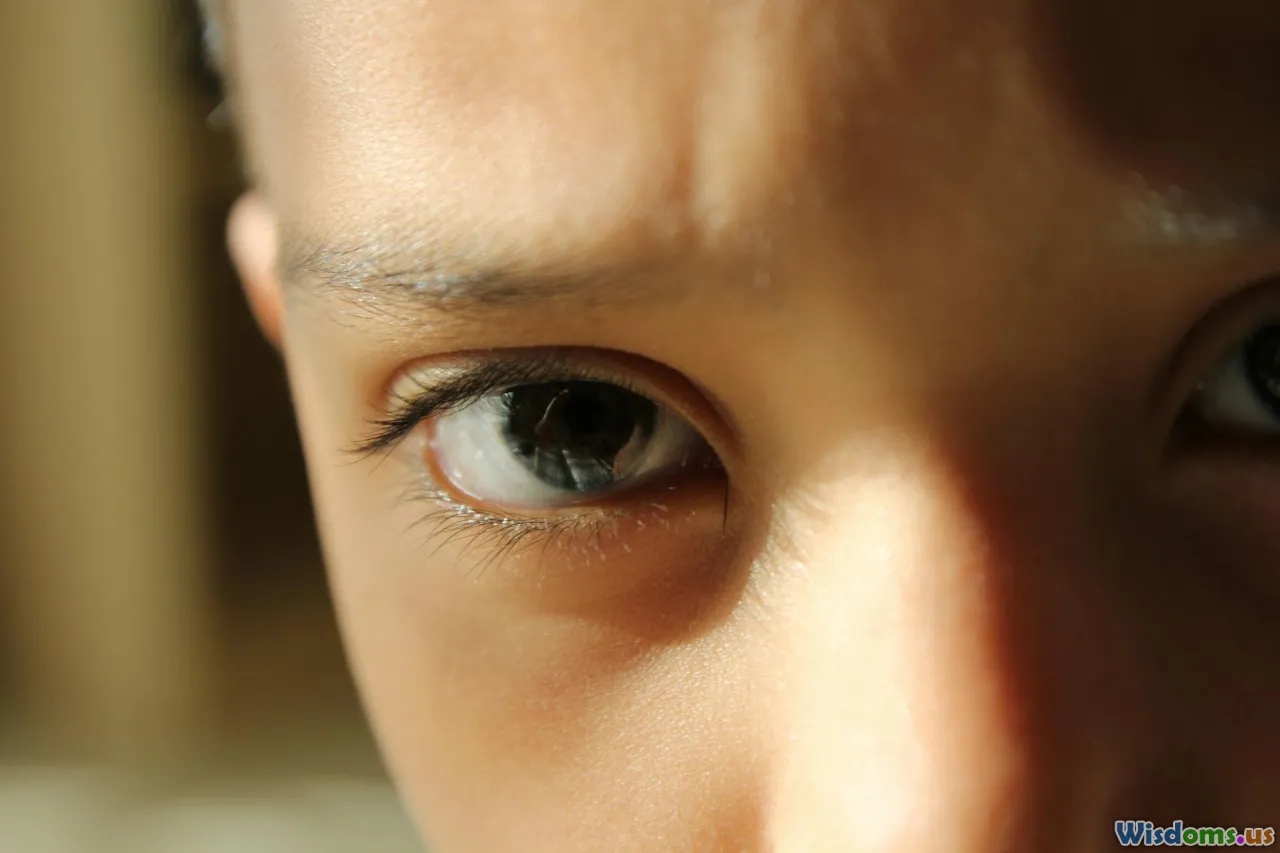
Silent Signals What Partners Really Say Without Words
15 min read Explore how silent signals and body language reveal your partner’s true feelings without words. (0 Reviews)
Silent Signals: What Partners Really Say Without Words
Relationships are shaped as much by what is unsaid as by conversations themselves. In the dance of connection, nonverbal cues can spark joy, sow confusion, inspire trust, or signal distance. Thousands of studies indicate that up to 93% of communication is nonverbal—including facial expressions, tone, touch, and even silence. Understanding your partner’s silent signals allows deeper empathy, more harmonious interactions, and insight into unspoken concerns or affection.
In this guide, we’ll explore the subtleties of nonverbal communication in relationships. You’ll learn how to decode meaningful cues, respond sensitively, and build emotional closeness—without always needing words.
The Power of Nonverbal Communication

It can be easy to forget how much is transmitted in a glance, a sigh, or a fleeting gesture. Consider a partner who avoids eye contact while discussing something important, or the reassurance that comes from a gentle squeeze of the hand during a stressful moment. These cues often reveal more authentic reactions than carefully chosen words.
Albert Mehrabian’s pioneering research in the 1970s found that when people communicate about feelings or attitudes, 7% of the message is conveyed with words, 38% with vocal elements (tone, pitch, speed), and 55% with facial expressions and body language. While this ratio isn’t absolute for all situations, it underscores how significant nonverbal signals can be, especially between close partners.
Real-world Example: Think about when one partner says, “I’m fine,” but looks away, arms crossed, and voice flat. The words suggest contentment, yet silence and posture tell a different story.
Key points:
- Nonverbal cues amplify, contradict, or replace verbal messages.
- Sensitivity to these cues means fewer misunderstandings and more genuine connection.
Body Language: Reading the Hidden Script

Body language encompasses everything from posture and hand gestures to proximity and touch. Partners often unconsciously “mirror” one another—leaning in at the same time or moving in sync. Mirroring is a subtle sign of comfort and unity.
Mirroring as Bonding
Research shows that couples who naturally mimic each other’s body language tend to feel more understood and emotionally close. For example, if one partner leans forward to share something important and the other echoes that movement, it signals engagement and respect.
Protective Gestures and Distance
- Closed-off postures: Arms folded over the chest, legs crossed away, or a body angled to face away all suggest discomfort or defensiveness. It might point to an emotional rift or disagreement.
- Open body language: Uncrossed arms, feet pointing toward each other, and leaning in signal attentiveness and openness.
Take Anna and Mark at a social gathering. Anna is laughing, body directed at Mark, mirroring his gestures as he speaks. Later, after a tense moment, Mark sits back, arms insulated across his chest, feet pointing toward the exit. No words required—the emotional distance is clear.
The Role of Touch
Affectionate touch—such as holding hands or a brief back rub—releases oxytocin, the “bonding” hormone. However, withdrawal from touch typically signals detachment, stress, or conflict.
Tip: If a subtle withdrawal happens (like your partner resisting cuddling where they previously welcomed it), use gentle words and curiosity to open up dialogue rather than immediate confrontation.
The Language of Eyes: Windows Into Emotion

Usually, eye contact signals honesty, attention, and intimacy. During deep conversations, partners who maintain eye contact tend to build more trust. Conversely, darting eyes, sustained downward stares, or rapidly blinking may indicate anxiety, distraction, hurt—or dishonesty.
Emotional Nuances in Eye Contact
- Lingering gaze: Signals love, desire, or gratitude. A famous study found that couples who engage in “mutual gaze” (locking eyes for a prolonged time) often report higher relationship satisfaction.
- Avoidant gaze: Might mean discomfort or the avoidance of confrontation, as when someone looks away during a tough subject. However, cultural perspectives matter—some people, or cultures, see eye contact as disrespectful.
- Teary Eyes: Tears aren’t always about sadness; they can flow from stress, relief, or overwhelming affection. Noticing this nuance can foster support rather than assumptions.
Silent Example:
Carmen notices her partner Dave’s darting gaze during discussions about finances. Instead of just repeating her points, she gently changes her approach, validating his concerns instead of pressing. Dave’s gaze soon softens, and conversation becomes more open.
The Unspoken Messages of Tone and Silence

Words are important, but “how” they’re spoken dramatically shapes their meaning. Partners quickly pick up on subtle shifts in tone or velocity that reveal hidden feelings. Just as important are the many shades of silence.
Tone and Prosody
Is your partner’s “I love you” warm, weary, sarcastic, or automatic? Prosody—the rhythm and melody of speech—can be a barometer for a person’s underlying mood or intentions.
- Raised pitch or abrupt tone: May signal stress, annoyance, or defensiveness.
- Lowered, slower tone: Indicates fatigue or perhaps resignation.
The Impact of Silence
- Comfortable silences: Signal deep trust, such as when couples read together or watch a sunrise in companionable quiet.
- Tense silences: Occur in the wake of arguments or uncomfortable topics. Here, the silence itself says much—perhaps that one partner is overwhelmed or doesn’t yet feel safe to share.
Insight: Instead of filling every pause with words, notice what kind of silence exists. Invite gentle conversation if discomfort seems present. A simple “I notice we’re both quiet—how are you feeling?” can open up important dialogue.
Microexpressions: Fleeting Truths in a Flash

Microexpressions are involuntary facial movements that last less than a second. According to Dr. Paul Ekman, who famously catalogued over 10,000 facial expressions, these fleeting grimaces or smiles often reveal truthful emotions—even when a person tries to mask them.
Spotting Microexpressions
- Brief eyebrow raises: Surprise or interest
- Tightened lips or brief sneer: Disgust or disagreement, even if a smile quickly follows
- Crumpled nose: Contempt or repulsion
Practical Example
Julia shares good news, and her partner quickly flashes a minuscule frown before clapping and congratulating her. Noticing the brief frown, Julia asks if her partner is okay. It prompts an honest chat about jealousy or stress that might otherwise remain hidden.
Building Sensitivity
To tune into microexpressions, watch for disconnects between someone’s words and their fleeting facial cues. This is especially relevant during discussions about difficult topics, plans, or feelings.
Digital Nonverbal Cues in Remote Relationships

Increasingly, couples navigate love from a distance. While traditional body language is limited through screens, subtle nonverbal signals still prevail.
Timing and Responsiveness
- Delayed replies: May communicate distraction, busyness, or disinterest—even unintentionally.
- Quick, enthusiastic responses: Express engagement and interest.
- Use of emojis: Lighthearted emojis, heart icons, or GIFs add intimacy otherwise absent online. But repeated neutral or one-word responses can feel dismissive.
Video Calls and Visual Cues
On video calls, partners rely heavily on facial expression and voice clarity. Noticing cues like fidgeting, tone shifts, and eye contact (direct gaze at the camera) can help interpret emotional undercurrents, even when in different time zones.
Tip: When distance makes recognition harder, verbalizing emotions becomes vital so that your intended tone isn't lost.
Interpreting Needs and Boundaries Nonverbally

Much of what we seek in relationships—support, space, affection—is first communicated through body language, boundaries, and tone. Recognizing these unspoken needs can strengthen trust and reduce conflict.
Signs a Partner Needs Space
- Short, clipped answers accompanied by turning away
- Avoiding affectionate gestures or physical closeness
- Dedicating more time to solo interests without including the partner
Recognizing the Need for Support
- Lingering near you without starting conversation
- Deep sighs or slumped posture
- Seeking soft touches—a hand on the shoulder, leaning in
Example: Patrick notices his wife lingering quietly in the kitchen, shoulders heavy, not making eye contact after a work call. Instead of pushing for immediate conversation, he sits nearby, offering presence. His respect for her silent signal helps her feel safe to open up in her own time.
Consent and Comfort
Consent isn't just about words; nonverbal cues matter just as much. Freezing, pulling back, hesitating, or forced smiling can all indicate discomfort or reluctance. Partners who tune in respectfully foster an environment where both feel safe.
When Signals Clash: Misinterpretation and Repair

No two individuals interpret every cue identically, because body language is shaped by personality, culture, and context. One partner may see silence as soothing togetherness, another as a sign of growing distance.
Common Causes
- Cultural differences: In many Asian cultures, direct eye contact may seem confrontational, while in the West, it often shows confidence and respect.
- Personal habits: Some people withdraw physically during stress; others seek closeness.
- Relationship history: Past hurt can make someone read neutral signals as rejection.
How to Repair
- Ask, don’t assume. Replace mind-reading with curiosity: “I noticed you seemed quiet this evening. Is there something on your mind?”
- Share your process: Explaining your perceptions (“When you pulled away, I felt you might be upset. Was I reading that right?”) invites honest dialogue.
- Clarify intentions: Sometimes a withdrawn partner is simply tired, not secretly angry. Checking in can prevent misunderstandings from snowballing.
Case study: Aditi and Sam always hugged before bed, but after a tough week, Sam started turning away. Instead of taking offense, Aditi gently mentioned missing their routine. Sam revealed he was preoccupied with work worries. This check-in restored their nightly ritual.
A couple’s most powerful conversations might have little to do with spoken words. By tuning into nonverbal signals with empathy and openness, you can foster resilience, warmth, and understanding in your relationship. Start studying the silent dialogues—not to play detective, but to listen with your eyes as well as your ears. As trust deepens, both partners become braver in sharing what they feel, both vocally and through the subtle languages only they two share.
Rate the Post
User Reviews
Other posts in Emotional Intelligence
Popular Posts


















